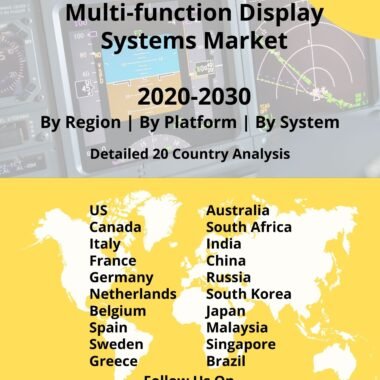Description
What excites passengers while flying?
Passengers of recent times are looking for a spectacular onboard customized experience in long hault flights. Besides, delicious snacks and meals, in-flight entertainment solutions play a significant role in providing a joyful experience while their air travel.
This idea of serving entertainment was first introduced by the airship Hindenburg. They offered passengers a lounge, piano, smoking room, dining room, and a bar during the 2 & 1⁄2-day flight between Europe and America in 1936. Later, in 1961, TWA was recognized as the first commercial airline to incorporate regular in-flight movies during a flight journey from New York to Los Angeles.
What is In-flight Entertainment?
The design and development of entertainment systems for aircraft passengers are referred to as in-flight entertainment (IFE). IFE is a collection of instructional and entertainment content broadcasted on a high-definition screen that can assist passengers to have a pleasant in-flight experience, on long flights. The use of an in-flight entertainment system can help to increase consumer loyalty and satisfaction.
Watching movies, news, and entertainment channels, listening to music, or playing online games are the in-flight entertainment categories. In-flight entertainment solutions also facilitate a wide range of information that may be useful to passengers, such as route information, onboard food and procedural rules, and other instructive inputs. These features are enabled through various connectivity solutions and hardware components.
Revolutionary Onboard Technologies
Nowadays, connectivity technology has become ubiquitous as it is our need to stay connected. Previously, it was only on the ground and now in the air.
Wireless IFE is a content distribution technology that sends wireless material to passengers’ devices. When compared to traditional in-flight entertainment options, wireless in-flight entertainment solutions are much lighter. For in-flight entertainment, most passengers prefer to use their own gadgets. Furthermore, wireless in-flight entertainment systems provide passengers with convenient internet access, video streaming, and other features on their devices. Airlines are also getting on the BYOD (Bring Your Own Device) bandwagon, converting passengers’ PEDs into a comprehensive entertainment solution to replace their previous In-Flight Entertainment systems. For instance,
Sunclass Airlines’ A321 aircraft will be equipped with Inflight Dublin’s Everhub wireless in-flight entertainment system. Sunclass Airlines’ A330 fleet also receives in-flight entertainment (IFE) programming which includes TV shows, Hollywood movies, boxsets, and music.
Several airlines have deployed routers in order to provide free Wi-Fi to their passengers. Passengers can connect to live Internet through their in-flight entertainment devices or laptops via in-flight Wi-Fi connectivity on numerous planes with the help of data connection via satellite technology. Passengers can enjoy their ride by accessing movies, music, games, and other entertainment media from their own devices over Wi-Fi.
Commercial airlines are experimenting with virtual reality and developing wireless network-centric IFEC strategies that will allow them to expand and evolve applications that are currently deployed on seatback screens, head-worn displays, and mobile devices.
The Arrival of New Features Accelerates the IFEC Business Growth
Airlines are positioning In-Flight Entertainment & connectivity solutions as a differentiator in response to rising customer demand for additional fun activities and increased competition. As a result, airlines are bringing new innovations on board, such as 3D IFE, wireless IFE, gesture control, and so on. Moreover, progressive technological advancements in consumer electronics have aided the development of sophisticated onboard entertainment systems. To improve customer experience during flight, most airlines are choosing the upgrade their in-flight entertainment systems.
In December 2021, American Airlines’s new Airbus A321XLR and Boeing 787-9 fleets will be equipped with the latest AVANT solution of Thales Group. This airline will be the first to travel using Thales’ new Optiq displays, which are the industry’s first 4K high dynamic range seatback panels with Samsung QLED proprietary technology.
Emirates, a Dubai-based airline had allowed passengers to make, receive calls, and send SMS messages up in the air for long. In 2018, Emirates allowed flyers from India to make calls from their own mobile phones.
Moreover, strategic collaboration among tech providers and aviation service providers, upcoming advances, and launches in this IFEC industry is also anticipated to trigger market demand in the coming years. For, instance, in 2021, Panasonic Avionics, an in-flight entertainment and communication system, had signed an agreement with Singapore Airlines to provide a unified IFEC experience across the airline’s widebody and narrowbody fleets. Singapore Airlines has chosen Panasonic Avionics’ eX1 IFE solution for its new Boeing 737-8 fleet of 37 planes. In both Business and Economy Class, the system includes full-HD seatback monitors with capacitive touch screen displays and USB charging outlets. IFE comes with an extra handset and in-seat power outlets in each Business Class seat.
Gogo and APT Mobile Satcom Limited signed an agreement to provide Chinese airlines with inflight connection (IFC) using Gogo’s satellite connectivity solution, 2Ku. In addition, Gogo is in-process of building a 5G cellular network AVANCE L51 specifically for the aviation process. They intend to launch this new air-to-ground connectivity solution in 2021.
By January 2022, Genius Brands International, Inc. is planning to partner with Spafax Inflight Entertainment, to broadcast Kartoon Channel content in JetBlue, as part of its inflight entertainment experience.
Manufacturers of IFEC systems invest in the development of innovative associated systems that may be integrated into current aircraft to complement or enhance their features, such as safety and aesthetics. As a result, the inflight entertainment and connectivity market is likely to grow at a steady pace over the forecast period.




